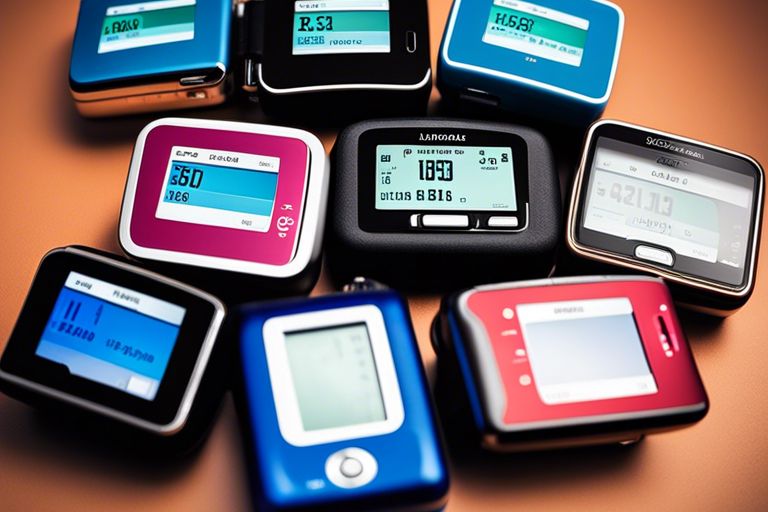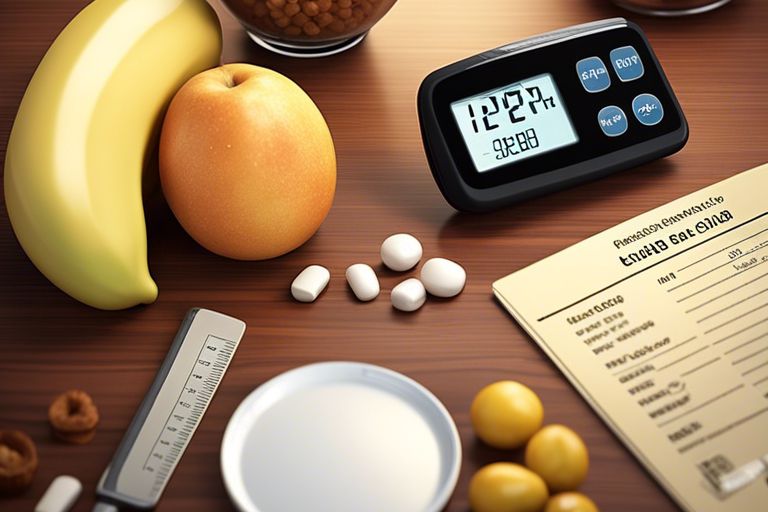Managing Type 1 Diabetes while traveling can be a challenging task, but with the right knowledge and preparation, it can be done successfully. As individuals with diabetes know, maintaining stable blood sugar levels is crucial for overall health and well-being. This guide aims to provide essential tips and strategies for travelers with Type 1 Diabetes to navigate different situations, ensuring they can enjoy their journeys while keeping their health in check.
Key Takeaways:
- Plan ahead: Make sure to pack extra supplies such as insulin, syringes, glucose tablets, and snacks in case of emergencies.
- Keep insulin cool: Use a cooling pack or insulated bag to store your insulin and protect it from heat while traveling.
- Stay hydrated: Drink plenty of water to help regulate blood sugar levels and prevent dehydration, especially when flying or in hot climates.
- Monitor regularly: Check your blood sugar levels frequently, especially when changing time zones or engaging in different physical activities while traveling.
- Communicate with travel companions: Inform your travel companions about your condition and how they can assist you in case of a diabetes-related emergency.
Pre-Travel Preparation
Any seasoned traveler living with Type 1 Diabetes understands the importance of thorough pre-travel preparation. Proper planning ensures a smooth and safe journey, allowing you to focus on enjoying your adventures without worrying about your health.
Medical Consultation and Travel Insurance
An essential first step before initiateing on any trip is to schedule a medical consultation with your healthcare provider. Discuss your travel plans, ensure your vaccinations are up to date, and request any necessary prescriptions or medical documentation. Your doctor can also provide valuable advice on managing your diabetes while traveling. Additionally, it is crucial to obtain travel insurance that covers your pre-existing condition. This will offer you peace of mind knowing that you are financially protected in case of any diabetes-related emergencies during your travels.
Packing Essentials for Diabetes Management
The key to successful diabetes management while traveling lies in careful packing. Make a checklist of essential items such as insulin, glucose monitoring devices, test strips, lancets, syringes or insulin pens, and a glucagon kit. Pack twice the supplies you anticipate needing to account for unexpected delays or loss of items. It is also advisable to carry snacks rich in complex carbohydrates to manage blood sugar levels during long journeys or in case of delays. A travel cooler or insulated pouch can help keep insulin at the right temperature while on the move.
The proper packing of diabetes essentials is critical to ensure you have everything you need to manage your condition effectively while away from home. Be diligent in organizing your supplies and medications to prevent any mishaps that could disrupt your travel plans.
Managing Blood Sugar Levels on the Move
Now, one of the key aspects of managing your diabetes while traveling is to ensure that your blood sugar levels stay within a healthy range. Fluctuations in blood sugar levels can be challenging to navigate, especially when you are on the go. However, with some careful planning and proactive measures, you can stay on top of your glucose levels even while traveling.
Monitoring Your Glucose Regularly
To keep your blood sugar levels in check while on the move, it is essential to monitor your glucose regularly. Make sure to pack all necessary supplies, such as your glucose meter, test strips, lancets, and insulin, in your carry-on bag. Check your blood sugar levels at regular intervals, especially before and after meals, and adjust your insulin dosage accordingly.
Monitoring your glucose levels regularly will help you track any fluctuations and take immediate action if needed. Keep a log of your readings to share with your healthcare provider upon your return.
Diet and Physical Activity Tips While Traveling
To maintain stable blood sugar levels while traveling, pay attention to your diet and physical activity. Opt for healthy, balanced meals and snacks to avoid spikes in blood sugar. Pack nutritious snacks such as nuts, seeds, fruits, and vegetables to keep your energy levels up without causing drastic blood sugar fluctuations.
- Avoid high-sugar and processed foods that can quickly elevate your blood sugar levels.
Knowing when and what to eat can make a significant difference in managing your blood sugar levels effectively while on the move. Engage in light physical activities like taking short walks or doing stretches during travel breaks to help regulate your blood sugar levels.
- Knowing how different foods and activities affect your blood sugar levels will empower you to make informed choices while traveling.
Traveling with diabetes requires careful planning and mindfulness, but it should not deter you from exploring the world. By incorporating these tips into your routine, you can better manage your blood sugar levels while on the move and enjoy a stress-free travel experience.
Handling Emergencies and Unexpected Situations
Recognizing and Responding to Hypoglycemia and Hyperglycemia
The key to managing Type 1 diabetes on the go is being able to recognize and respond effectively to episodes of hypoglycemia (low blood sugar) and hyperglycemia (high blood sugar). Symptoms of hypoglycemia can include shakiness, sweating, confusion, and dizziness. In contrast, hyperglycemia symptoms may include extreme thirst, frequent urination, fatigue, and blurred vision.
Always carry a portable glucose monitor and fast-acting glucose tablets to address hypoglycemia quickly. In cases of hyperglycemia, drink plenty of water and monitor your blood sugar levels closely. If symptoms persist or worsen, seek medical attention immediately.
Accessing Medical Care Abroad
When traveling abroad with Type 1 diabetes, it’s essential to have a plan in place for accessing medical care if needed. Research medical facilities in your destination ahead of time and find out if they have experience treating diabetes. Carry a written medical history, including your diagnosis, current medications, and emergency contacts, in the local language.
Plus, consider investing in travel insurance that covers pre-existing conditions like diabetes. This can provide peace of mind in case of a medical emergency while abroad and ensure you receive the necessary care without financial burden.
Staying Healthy During Your Travels
Adjusting Your Diabetes Care Routine to Time Zones and Climate
The key to managing your diabetes while traveling is to adjust your care routine to different time zones and climates. Changes in time zones can disrupt your regular schedule, including meal times and insulin doses. It is essential to plan ahead and consult with your healthcare provider to create a new schedule that aligns with the time zone of your destination.
Additionally, climate variations can impact blood sugar levels. For instance, hot weather can lead to dehydration and low blood sugar, while cold weather can affect insulin absorption. Be prepared by packing extra diabetes supplies, such as insulin, glucose tablets, and snacks, to account for these fluctuations.
Stress Management and Staying Hydrated
Adjusting to the stresses of travel can affect your blood sugar levels. It’s important to manage stress through relaxation techniques like deep breathing, meditation, or yoga. These practices can help regulate your blood sugar levels and enhance your overall well-being.
With the hustle and bustle of travel, staying hydrated is crucial for maintaining good health. Dehydration can lead to high blood sugar levels and other complications. Make sure to drink plenty of water throughout your journey and limit sugary beverages to keep your diabetes in check.
Final Words
From above, it is evident that managing type 1 diabetes while traveling requires careful planning and preparation. By following the tips outlined in this guide, individuals with type 1 diabetes can navigate their journeys with confidence and peace of mind. Remember to pack extra supplies, stay hydrated, monitor blood sugar levels regularly, and communicate your condition to travel companions or authorities when necessary. With proper management, individuals with type 1 diabetes can continue to explore the world and enjoy new experiences while keeping their health a top priority.
FAQ
Q: What is Type 1 Diabetes?
A: Type 1 diabetes is a chronic condition where the pancreas produces little to no insulin, causing high blood sugar levels that need to be managed with insulin injections.
Q: How can traveling impact someone with Type 1 Diabetes?
A: Traveling can disrupt a person’s routine, including meal times, physical activity, and stress levels, which can all affect blood sugar levels and management of Type 1 Diabetes.
Q: What should a Traveler with Type 1 Diabetes pack for their trip?
A: A traveler with Type 1 Diabetes should pack extra insulin, blood glucose testing supplies, snacks for low blood sugar, a letter from their doctor detailing their condition and treatment, and any necessary prescriptions.
Q: How should a Traveler with Type 1 Diabetes plan their meals while on the go?
A: A traveler with Type 1 Diabetes should research meal options at their destination, carry healthy snacks for emergencies, and try to maintain a regular meal schedule to help regulate blood sugar levels.
Q: What are important tips for managing Type 1 Diabetes while traveling?
A: Some important tips include staying hydrated, carrying a medical ID or bracelet, informing travel companions about your condition, checking blood sugar levels frequently, and having a plan for emergencies.




